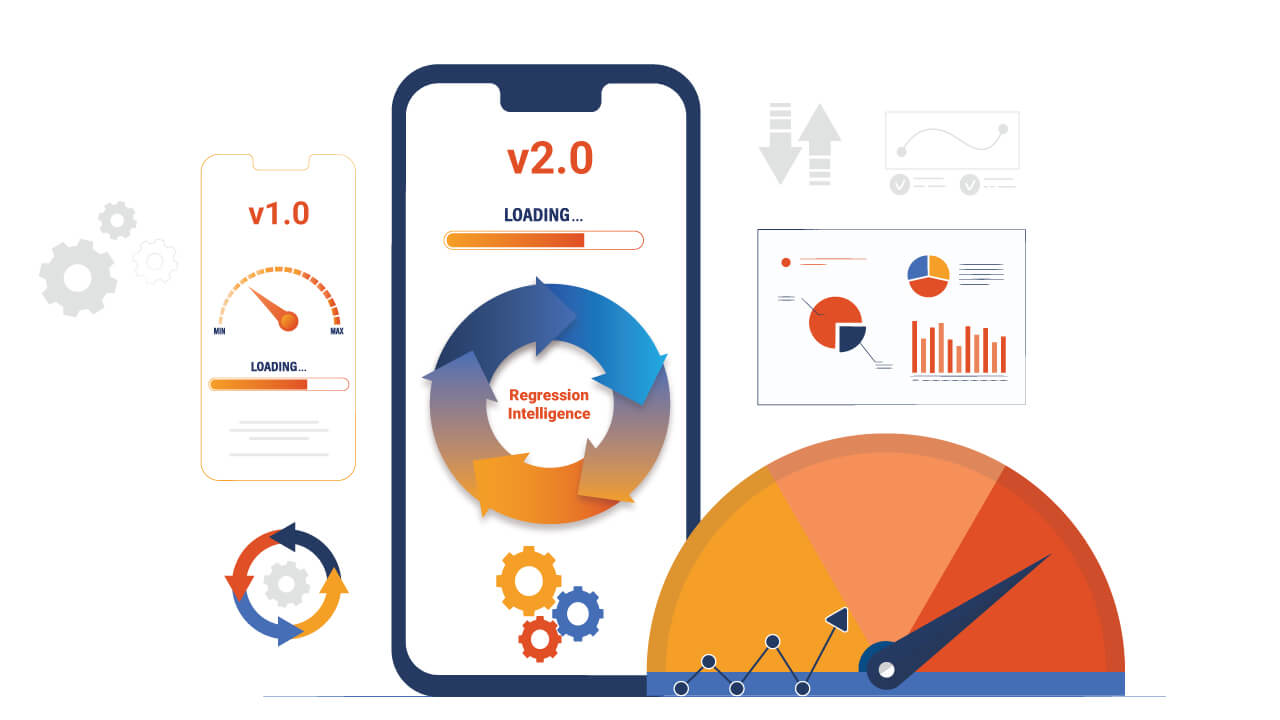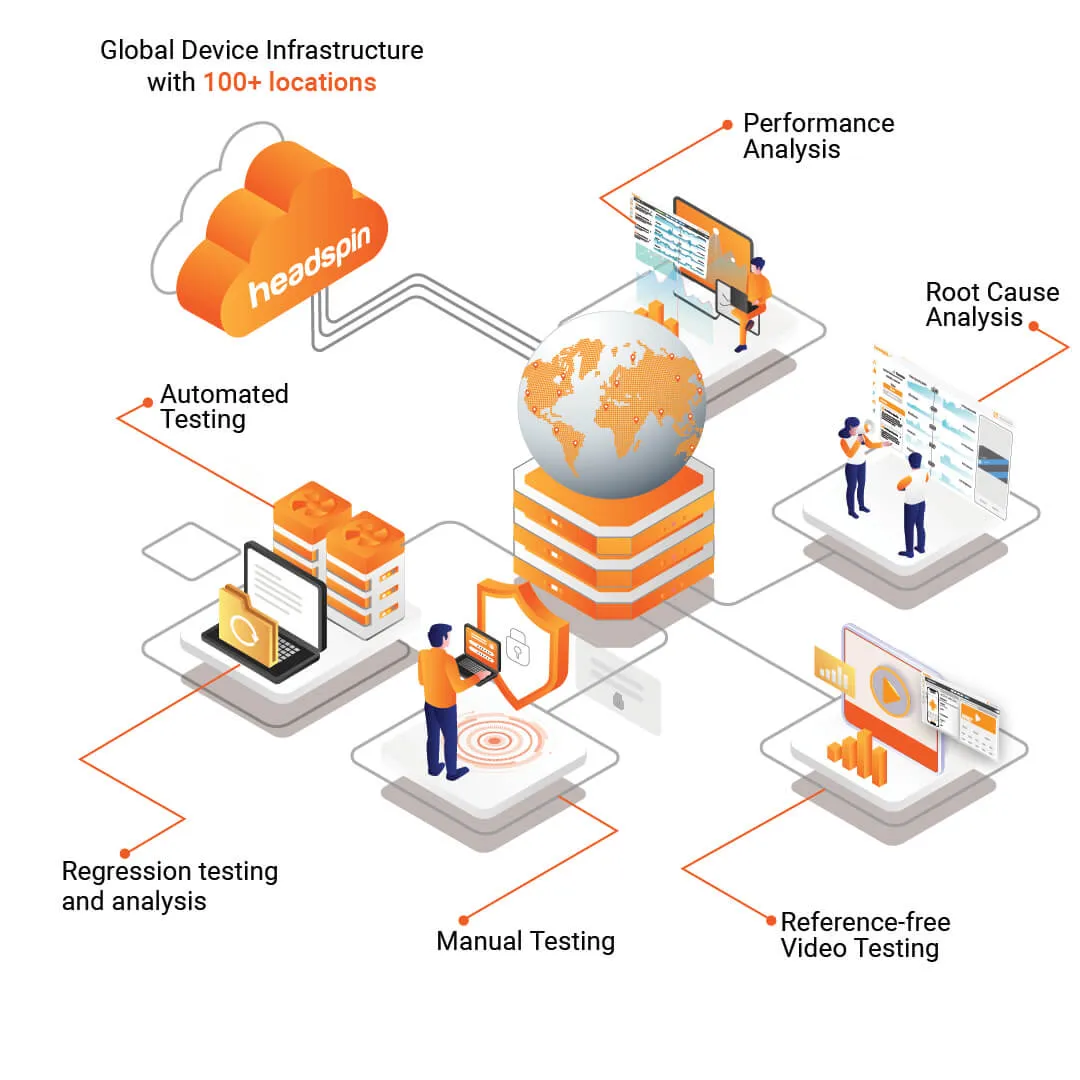Introduction
Continuous Integration (CI) is a fundamental part of modern software development and closely aligns with DevOps and Agile methodologies. It involves developers regularly merging code changes into a shared repository to maintain up-to-date project versions. CI also includes automated builds and testing to detect errors early and reduce the risk of regressions.
Traditional Waterfall development often delays issue detection and makes it difficult to adapt to change. In contrast, CI/CD, Agile, and DevOps now enable faster and more reliable software delivery. Continuous testing plays a central role in this process by providing quick feedback, reducing turnaround time, and supporting iterative development.
This blog explains the role of continuous integration testing, its importance, how it works, and the tools that support it. It also outlines the importance of integrating testing into the CI/CD pipeline as a standard practice in today’s development workflows.
Continuous Integration Testing: A Clear Overview
Continuous integration (CI) testing is a core part of modern software development. It helps teams catch issues early, reduce risks, and maintain high code quality. As part of the CI/CD pipeline, it automates testing throughout development to support faster, more reliable delivery in DevOps workflows.
Key aspects of CI testing include:
- Risk Focus: Identifies potential issues early to reduce business and technical risks.
- Quick Feedback: Delivers test results in real-time, allowing teams to respond quickly.
- Product Stability: Prevents bugs from reaching production, helping maintain quality.
- DevOps Integration: Works within the existing toolchain and delivery workflows.
- Full Lifecycle Coverage: Supports testing from early development to production.
- Test Efficiency: Runs the proper tests at the right stage to keep the pipeline moving.
- Ongoing Improvement: Continuously refines the test suite to remove redundancies and reduce false positives.
Automated test scripts are used throughout the pipeline to reduce manual effort and provide immediate feedback. When a test fails, developers are notified right away so they can make quick fixes. If a test passes, the code moves forward automatically, keeping development focused and productive.
Exploring Varied CI Tests for Robust Software Development
In Continuous Integration (CI), the process starts with a code check-in and ends with a published build. Along the way, different automated tests are run as part of the build process.
- Code Quality Tests: integrated into the CI process, code quality tests focus on static code analysis. Tools like SonarQube and Checkmarx delve into dead blocks, syntax quality, and potential security issues. While not evaluating functionality, these tests are crucial in maintaining code integrity.
- Unit Testing: The backbone of CI, unit tests examine individual blocks/methods affected by code changes. Tools like JUnit (JAVA) and Mocha (NPM) create a granular testing environment, ensuring the functionality of specific features. Continuous integration unit testing is pivotal for scenarios where functionality needs in-depth scrutiny.
- Integration Testing: In a multifaceted application landscape, integration testing becomes imperative. Focused on cross-module functionality, tools like JUnit bridge the gap between unit and integration testing. For instance, in a calculator app, an integration test might involve simultaneous division and multiplication, ensuring smooth collaboration among features.
- Security/License Testing: Given the reliance on third-party open-source components, security/license testing is paramount. Tools like Blackduck, Snyk, and StackHawk assess exposure and risk associated with external packages. Continuous testing in CI pipelines enhances frequency, offering a proactive approach to identifying potential vulnerabilities.
In the dynamic world of software development, where the landscape evolves, incorporating integration testing in CI/CD pipelines provides a robust defense against bugs and security lapses and ensures the seamless integration of new features. As you embark on your CI journey, integrating these tests early on proves to be a judicious move, fostering a culture of continuous integration testing.
Strategizing Testing for Effective Continuous Integration
Achieving continuous integration demands rigorous testing for every build, but practical constraints often necessitate a thoughtful approach. Two primary considerations in designing effective testing for CI are the time required for tests and the relative importance of each test.
- Time to Test: Comprehensive testing, ranging from swift unit tests to time-intensive regression and UI tests, poses a logistical challenge. While unit tests are inherently fast, complete regression tests can extend into hours, especially when system state resets are involved. Frequent code pushes by developers throughout the day make it impractical to run all tests for every build.
- Relative Importance of Tests: Not all tests carry equal weight. Some may explore obscure scenarios, while others validate the core functionality of the entire system. Leveraging this distinction allows for effective test prioritization.
- Test Prioritization: Streamlining CI testing involves categorizing tests into three tiers. Each build undergoes suitable unit and quick smoke tests, assessing fundamental system functionality within minutes. Hourly, the latest build faces a more comprehensive test suite, emphasizing high-priority tests. For exhaustive regression tests, consider running them overnight or over the weekend, accommodating longer durations.
This strategic testing approach optimizes resource usage and ensures that critical aspects of system functionality are rigorously tested at suitable intervals, aligning with the dynamic cadence of continuous integration.
Check out: How Does Continuous Testing Accelerate DevOps?
Advantages of Integrating Continuous Testing in Software Development
Integrating continuous testing into the software development life cycle reaps numerous business benefits. Let's delve into some key advantages:
- Enhanced Error Detection & Resolution: The intricate architecture of web applications often makes error identification and resolution challenging. Continuous testing, driven by automated and scalable solutions, simplifies this process. Developers can effectively dissect complexities, leading to improved error detection and swift rectification.
- Minimizing Business Disruptions: In interconnected application systems, a single module error can trigger widespread downtime, severely impacting productivity. Continuous testing operates at a granular level within large application systems, unveiling errors that might remain concealed at higher levels. This proactive approach aids in avoiding disruptions and minimizing associated costs for resolution.
- Elevating Deployment Quality: Continuous testing introduces automated quality assurance management across various stages of the Software Development Life Cycle (SDLC). Development teams gain actionable insights by facilitating continuous feedback loops for unit testing and user modules. This empowers teams to enhance code performance, quality, and compatibility before deployment, fostering faster, high-quality product releases.
- Revolutionizing User Experience: Continuous testing provides valuable insights for troubleshooting diverse user interface scenarios. This enables developers to streamline the user experience, eliminating inefficiencies and minimizing disruptions after deployment. The result is an optimized, user-friendly interface that aligns perfectly with user expectations.
Challenges in Continuous Integration Testing
Navigating continuous integration testing has its pitfalls, and a couple of significant challenges can impede the smooth execution of this process.
One primary hurdle is the issue of test maintenance. In an ideal scenario, a CI system relies on tests that consistently work, with failures only indicative of genuine code issues. However, the reality is often different, with many automated test systems, such as Selenium, experiencing spurious failures. Addressing and resolving these false positives can consume valuable time and resources, temporarily hindering testing.
The second challenge lies in the demand for new tests for fresh code. As your codebase evolves, the necessity to develop corresponding tests for new functionalities arises. The dual challenge of managing spurious failures and consistently expanding test coverage can become a resource-intensive endeavor.
While these challenges are actively being addressed, it's essential to acknowledge that testing may encounter temporary blockages during the resolution phase. Balancing the pursuit of robust testing with efficient resource utilization remains a crucial consideration in the continuous integration landscape.
Also check: How to Maximize Performance with DevOps Test Automation
Exploring Essential Tools for Continuous Testing
Having uncovered the strategies for integrating continuous testing into your project, let's delve into a selection of automation testing tools that can elevate your testing endeavors:
- Travis CI: Travis CI stands out as a continuous integration testing tool catering to the testing and deployment needs of software projects hosted on GitHub or Bitbucket. Offering both on-premise and hosted variations provides flexibility in choosing the environment that best suits your project.
- Selenium: Renowned as the go-to open-source automation testing tool for Web UI, Selenium boasts widespread usage. It equips developers with tools for authoring functional tests across various web browsers, including Chrome, Safari, Microsoft Edge, and Firefox.
- Jenkins: Jenkins emerges as a pivotal open-source, automated continuous integration tool tailored for the Java programming language. Its capabilities extend to automating testing, building, and deploying software, streamlining the processes of continuous integration and delivery.
Incorporating these tools into your testing framework will equip your development team with the robust support necessary for efficient continuous testing and streamlined software delivery.
Also read: How ReportPortal Helps Continuous Integration and Testing Processes
What’s the difference between Continuous Integration, Continuous Delivery, and Continuous Deployment
Empowering Continuous Integration Testing with HeadSpin's Advanced Capabilities
Here are some ways in which HeadSpin's AI-driven Platform can help in continuous integration testing for mobile applications:
1. Real Device Testing:
- HeadSpin enables CI pipelines to run tests on real devices rather than emulators. This ensures more accurate results, as real devices may behave differently than emulated ones.
2. Cross-Platform Testing:
- HeadSpin's extensive global device infrastructure supports a wide range of devices and operating systems, enabling thorough testing across multiple platforms. This ensures the application's better functionality across various devices and OS versions.
3. Network Conditions Simulation:
- HeadSpin can run tests under different network conditions, such as 3G, 4G, or varying levels of connectivity. This helps test how the application performs under different network scenarios, contributing to more robust testing in CI.
4. Performance Testing:
- Continuous Integration often involves running performance tests to ensure the application meets the required performance standards. HeadSpin can help test under various scenarios, such as high user load or resource-intensive operations, to assess the app's performance.
5. Localization Testing:
- For applications targeting a global audience, HeadSpin can test under different geographic locations and languages, allowing teams to ensure that the app functions correctly and provides a consistent experience in diverse settings.
6. Automation Integration:
- HeadSpin can be integrated with popular test automation frameworks, allowing CI pipelines to execute automated test scripts seamlessly. This integration helps in achieving faster and more reliable testing processes.
7. Detailed Reporting and Analytics:
- CI testing generates a substantial amount of data. HeadSpin's data science-driven Platform provides detailed reports and analytics on test results, performance metrics, and other vital indicators. This information is valuable for identifying and addressing issues quickly.
8. Real-Time Monitoring:
- Continuous monitoring of the application in real time is crucial. HeadSpin provides features for monitoring app performance and user experience, allowing teams to address any issues arising during the CI process proactively.
9. Security Testing:
- HeadSpin may offer features to simulate security threats and vulnerabilities, aiding in identifying and resolving security issues during the CI testing phase.
10. API Testing:
- HeadSpin can be used to test the integration points of mobile applications, ensuring that APIs and other backend services are functioning correctly and securely.
6 Best Practices for Continuous Integration Testing
To keep your CI pipeline fast, stable, and effective, here are six core practices teams should follow:
1. Automate build and test workflows
Set up your CI system to automatically build and run tests with every code change. This ensures quick feedback and early detection of issues.
2. Run tests on real devices and networks
Testing in real environments helps uncover problems related to device behavior, network conditions, or media playback that emulators often miss.
3. Prioritize fast, reliable unit tests
Structure your test suite around fast-running unit tests. Use integration and UI tests selectively to avoid slowing down the pipeline.
4. Eliminate flaky or unstable tests
Flaky tests waste time and reduce trust in test results. Review and fix them regularly to maintain a reliable pipeline.
5. Use parallel and selective test execution
Run tests in parallel to reduce overall time. Only run relevant tests for the code that was changed, instead of triggering the full suite every time.
6. Continuously monitor and improve the pipeline
Track key metrics such as build duration, failure rate, and test coverage. Make regular improvements based on these insights to maintain an efficient pipeline.
Summing Up
In software development, continuous testing isn't merely an option; it has evolved into the indispensable standard for a triumphant project launch. Modern businesses striving for success in the market must harness the power of continuous testing, employing the right tools and methodologies.
As technology evolves and novel testing approaches emerge, the importance of a robust and adaptable platform becomes evident. Platforms like HeadSpin offer the versatility to integrate these advancements into your testing pipeline. This instills confidence in your testing processes and fosters agility, enabling your development team to navigate the ever-changing landscape of software development with finesse. Embracing continuous testing is no longer a choice; it's a strategic imperative for thriving in modern software development's dynamic and competitive world.
FAQs
Q1. What plays a crucial role in a CI/CD pipeline?
Ans: Automation is pivotal for a reliable CI/CD pipeline, ensuring a repeatable release process. Initially, the emphasis is on automating builds and executing tests.
Q2. What fundamental principle guides Continuous Integration?
Ans: Continuous Integration adheres to the principle that a build must be verifiable. The readiness of a build to advance in the process should be objectively determined, typically achieved through automated tests.



























.png)



















-1280X720-Final-2.jpg)






